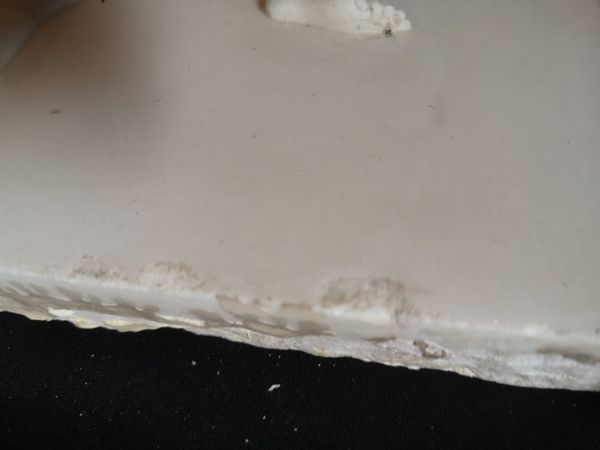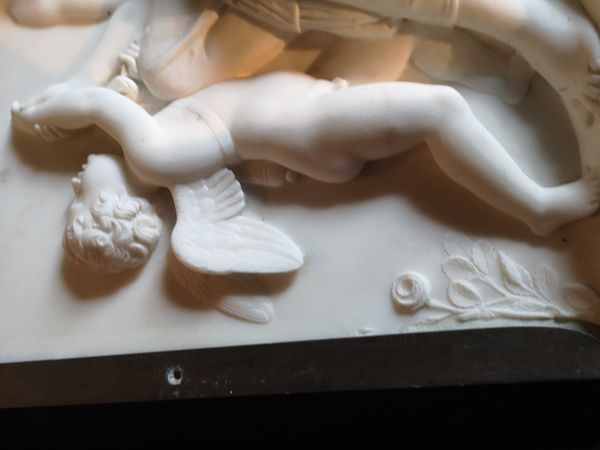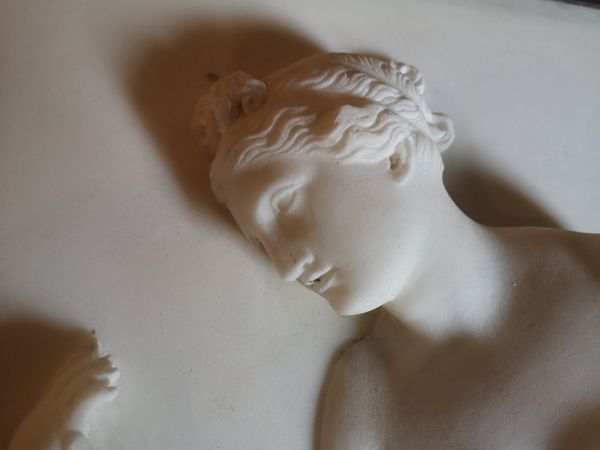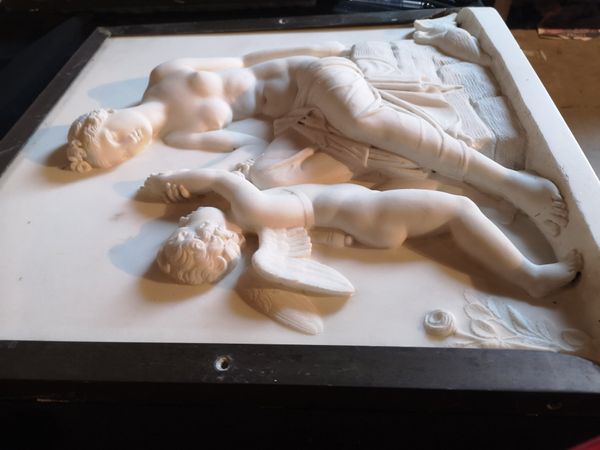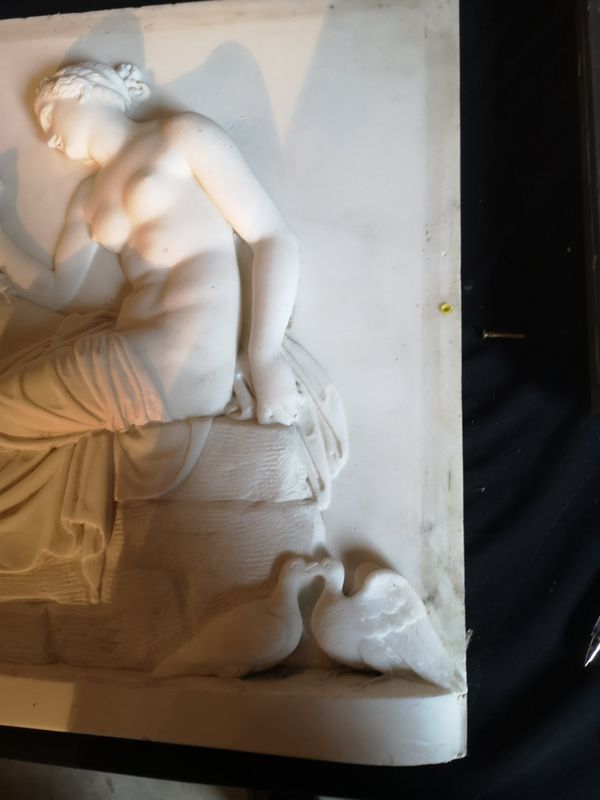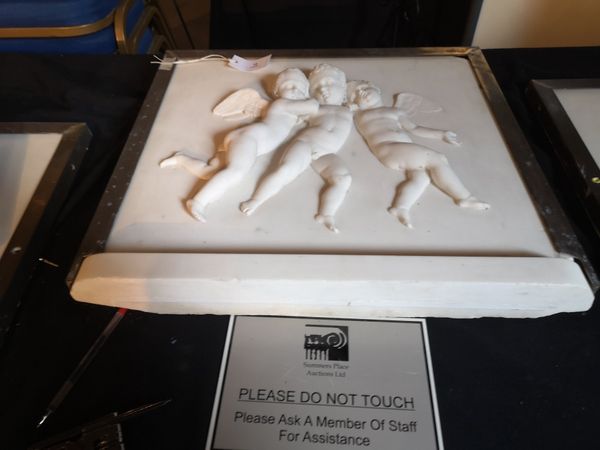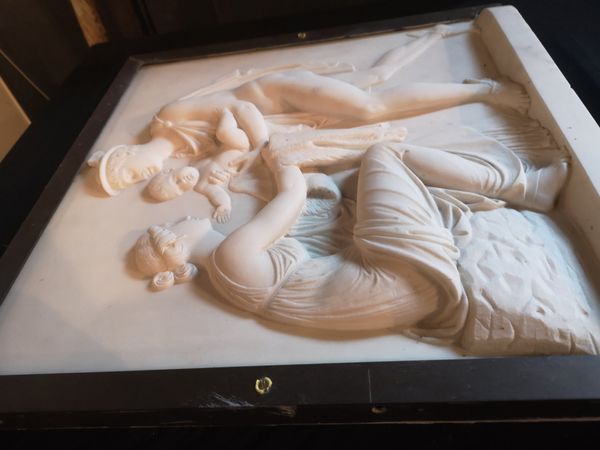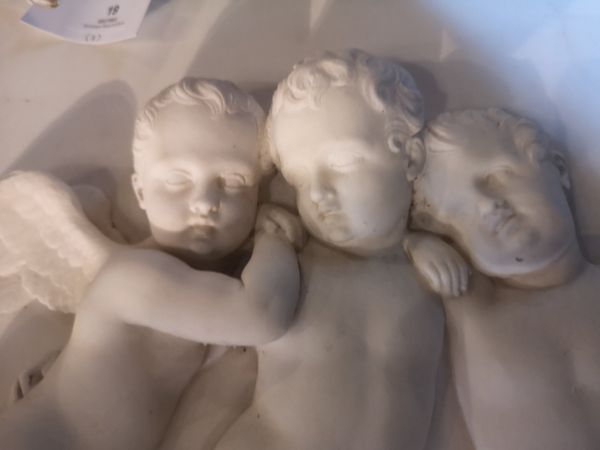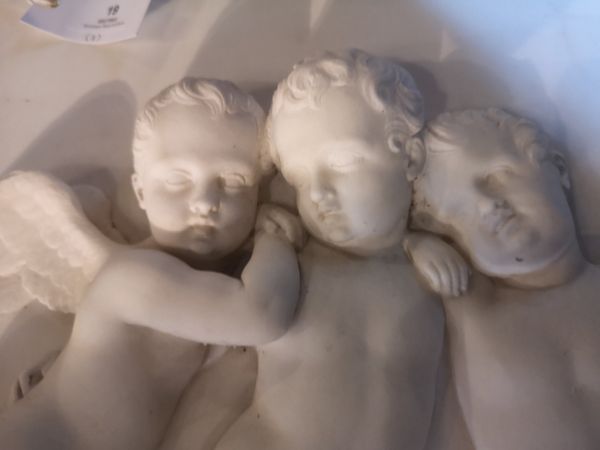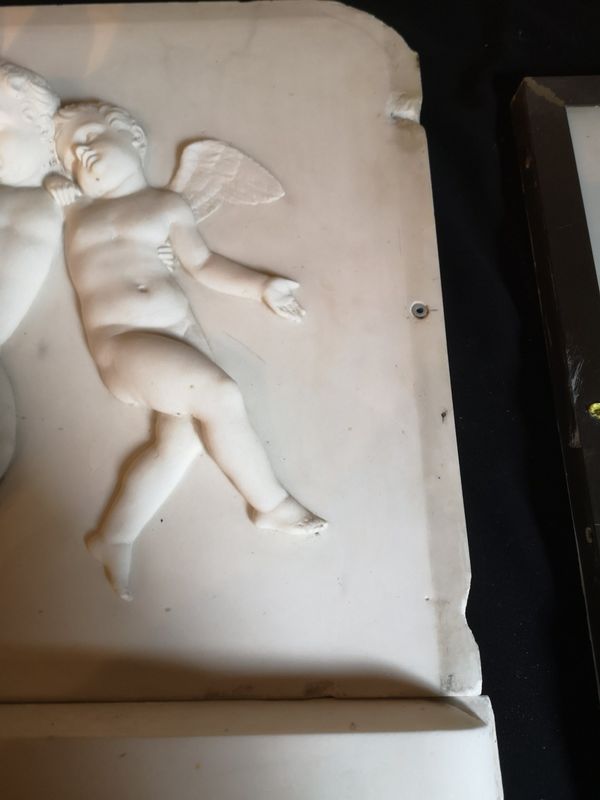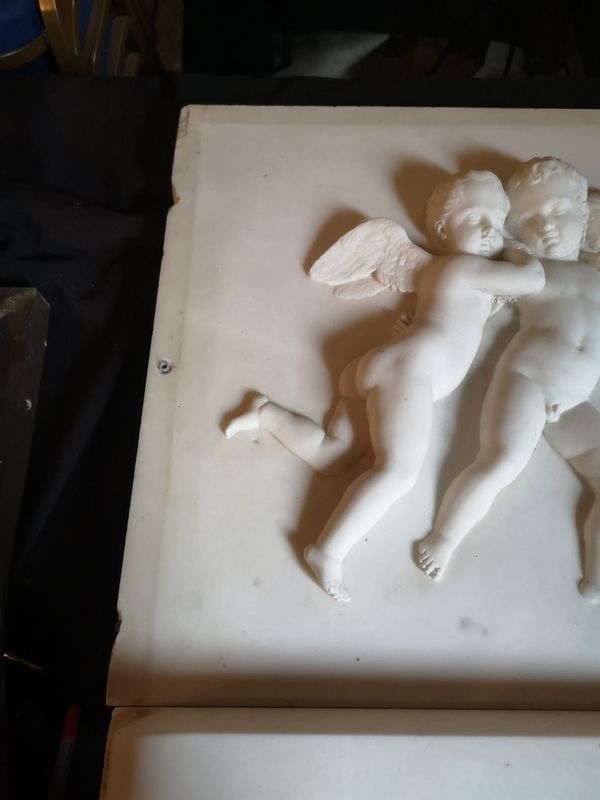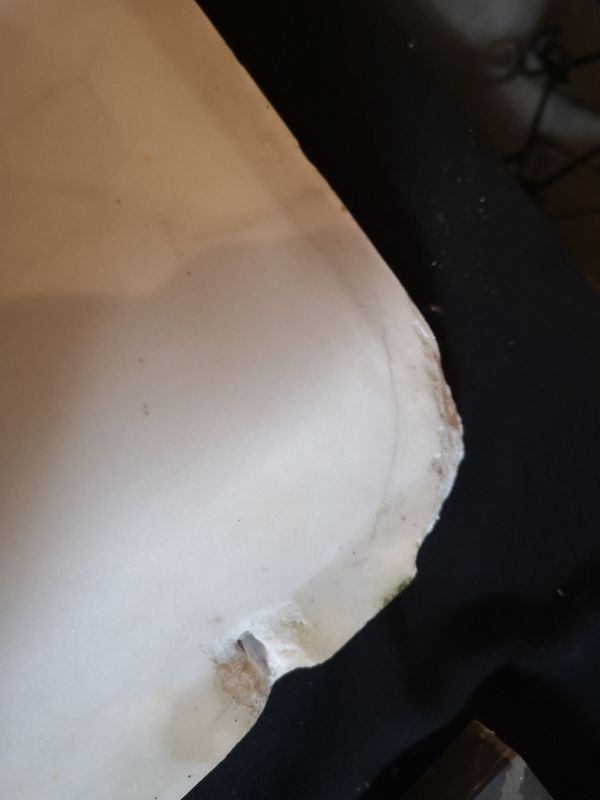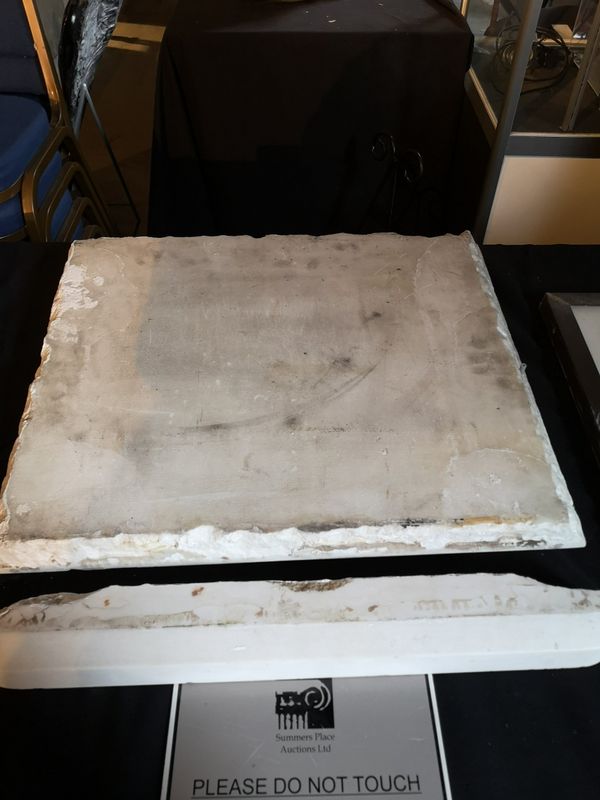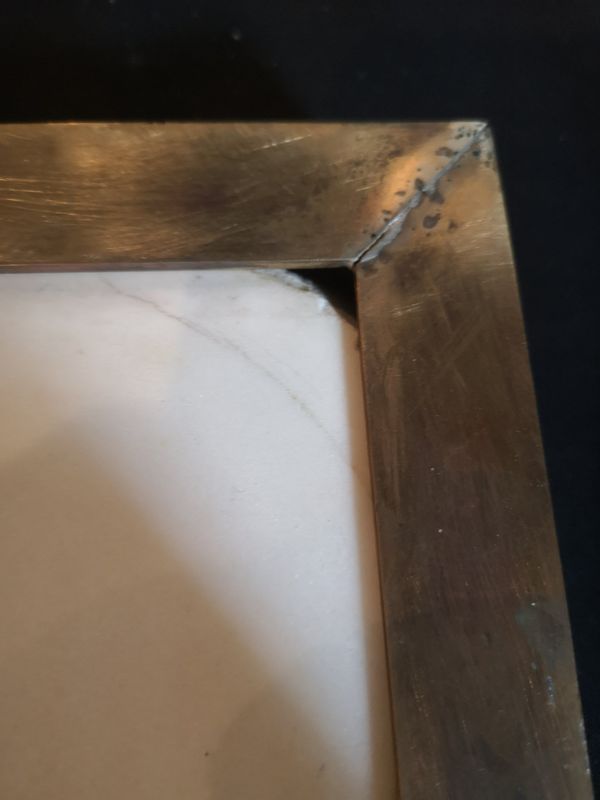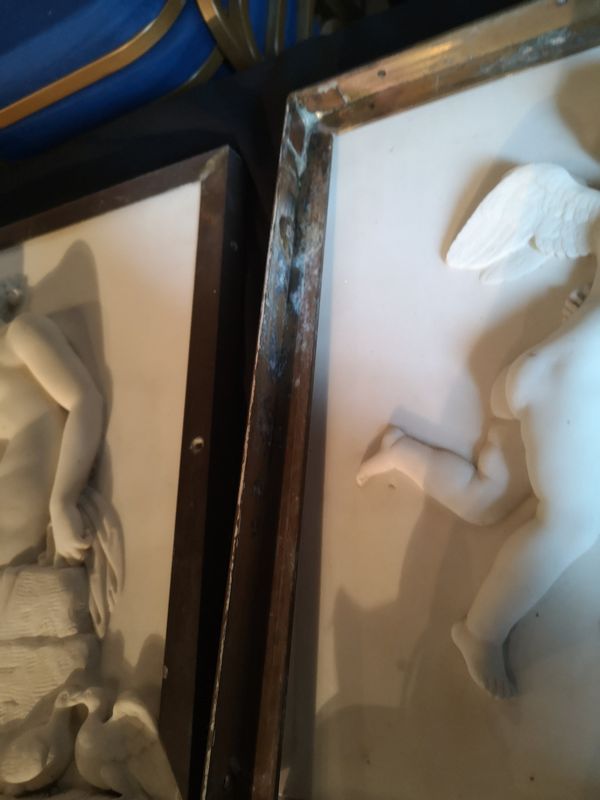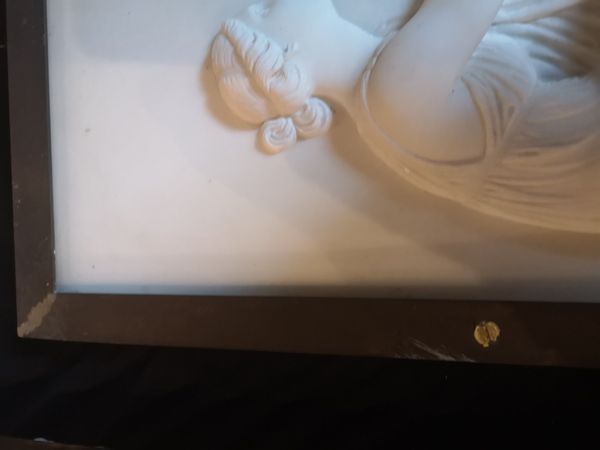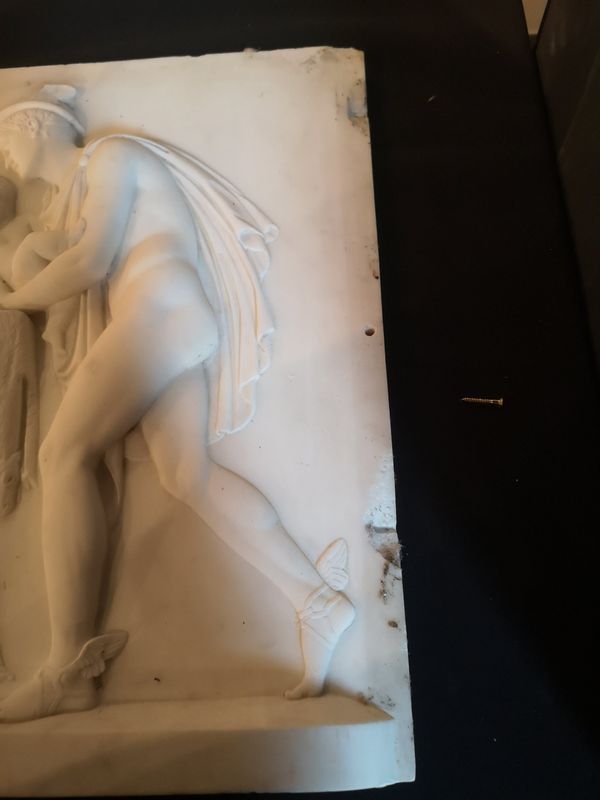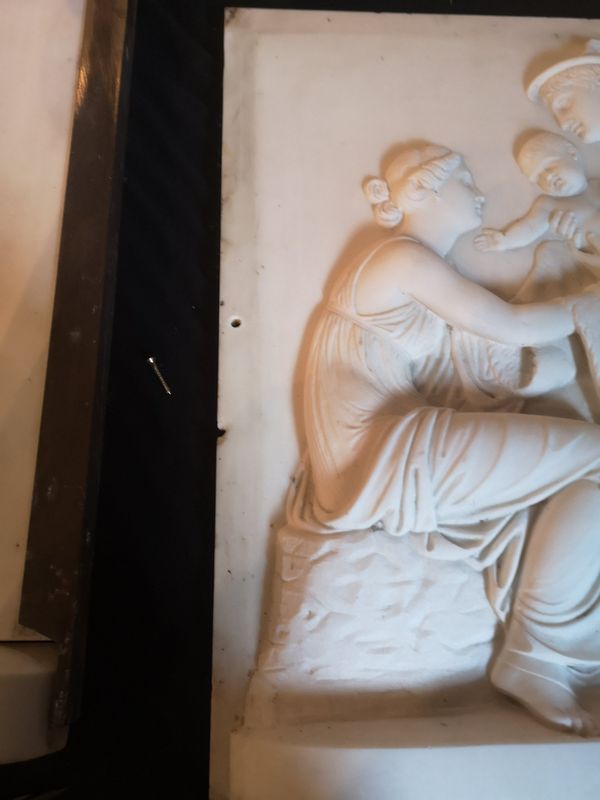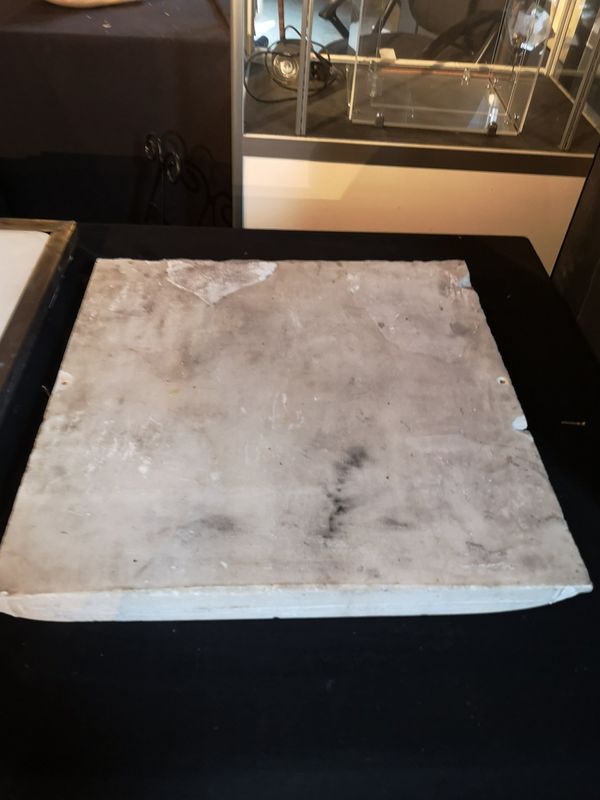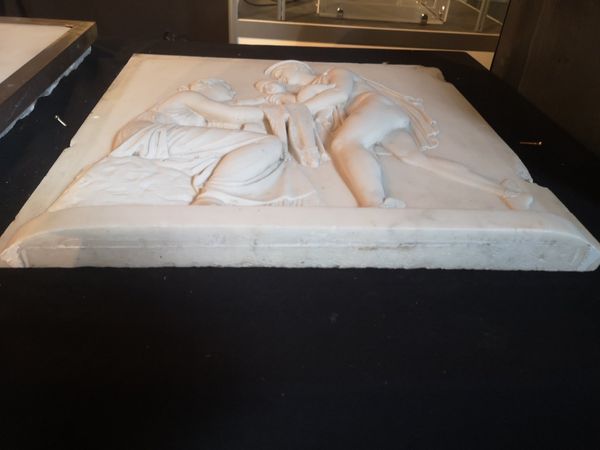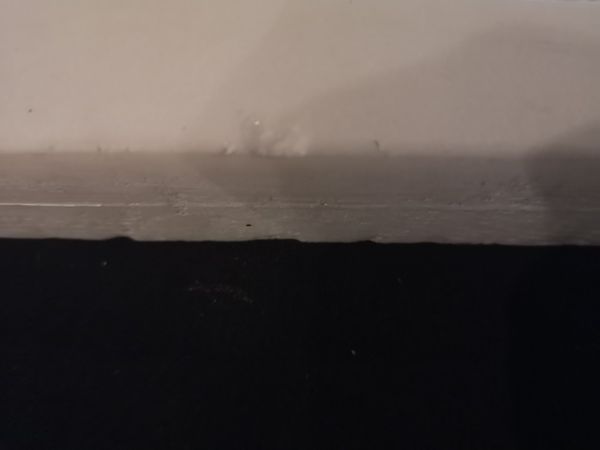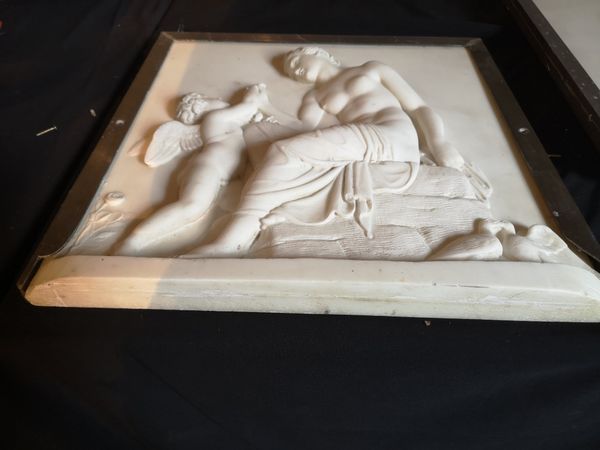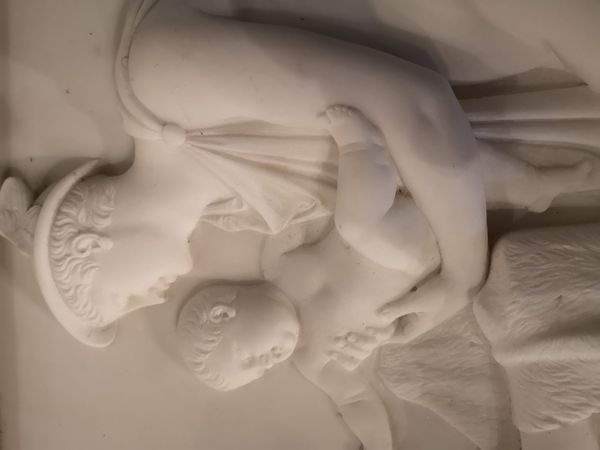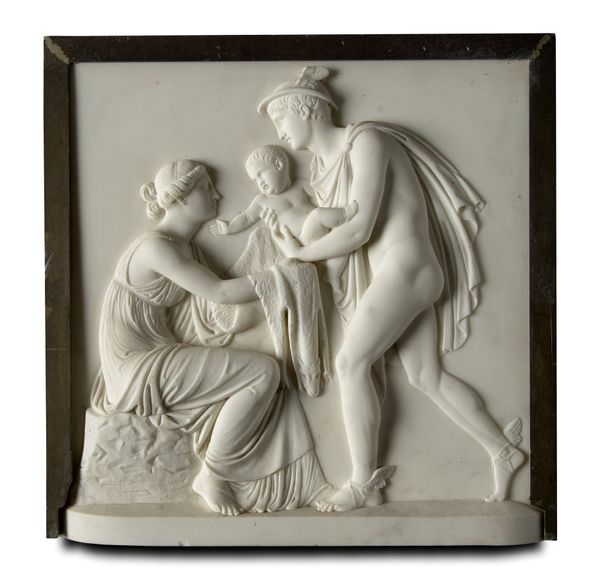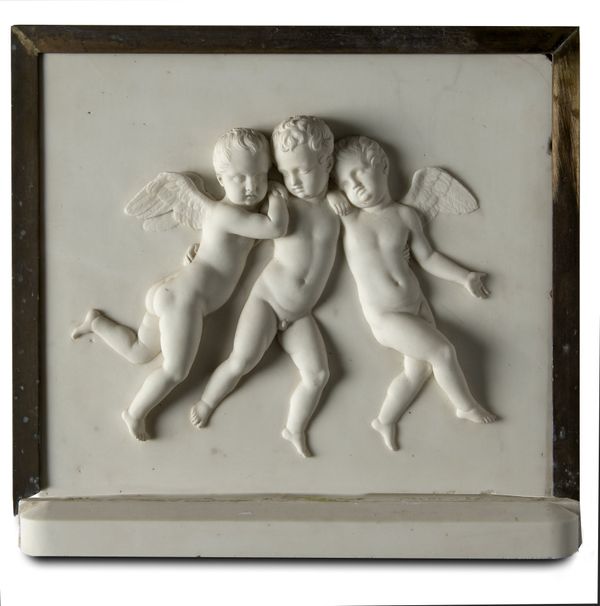Rome, probably 1830’s
in bronze frames
The Three Angels 50cm high by 55cm wide,
The pair of Mercury entrusting the infant Bacchus to Ino and Venus comforting Cupid stung by a bee, 49cm high by 50cm wide
| Condition: | Mercury entrusts the infant Bacchus to Ino - Some small areas of chipping around fixing holes of frame but not visible when frame is on. One very small chip on bottom of projecting lip. Bronze frame probably later in date and with solder marks in top corners. Overall very good condition and in need of a light clean - Venus comforts Cupid stung by a bee - A few small chips around edges of plaque and 2 drilled fixing holes, all not visible when frame is on. A few very small chips on bottom off projecting lip; Bronze frame probably later in date and with solder marks in top corners; Overall very good condition and in need of a light clean. The Three Angels - Bottom lip of plaque a separate piece of marble but looks original. Some chipping around edges of plaque and top right corner missing and just visible when frame is on. Two very small chips on bottom of plaque above projecting lip; Bronze frame probably later in date and with solder marks in top corners. Overall very good condition and in need of a light clean. |
| Estimate: | £20,000 - £40,000 |
Bertel Thorvaldsen, Thorvaldsen also spelled Thorwaldsen, 19 Nov., 1770, 24 March 1844, was a sculptor, prominent in the Neoclassical period, who was the first internationally acclaimed Danish artist. Prominent in Roman intellectual and artistic circles, he influenced many emerging artists from Europe and the United States.
The son of an Icelandic wood-carver who had settled in Denmark, he studied at the Copenhagen Academy and won a travelling scholarship to Rome, where he was to live most of his life. In Italy the prevailing enthusiasm for classical sculpture fired his imagination so much that he later celebrated the date of his arrival in 1797 as his “Roman birthday.”
The success of Thorvaldsen’s model for a statue of Jason (1803) attracted the attention of the Italian sculptor Antonio Canova and launched Thorvaldsen on one of the most successful careers of the 19th century. In Rome, Thorvaldsen made a name for himself as a sculptor. Maintaining a large workshop in the city, he worked in a heroic neo-classicist style. His patrons resided all over Europe. When he returned to visit Copenhagen in 1819, his progress through Europe, in Berlin, Warsaw, and Vienna, was like a triumphal procession. His return from Rome in 1838, when he eventually decided to settle in Copenhagen, was regarded as a national event in Danish history. A large portion of his fortune went to the endowment of a Neoclassical museum in Copenhagen (begun in 1839), designed to house his collection of works of art, the models for all his sculptures; by his own wish, Thorvaldsen was to be buried there.
As with this impressive suite of marble plaques, most of Thorvaldsen’s characteristic sculptures are reinterpretations of the figures or themes of classical antiquity. The Alexander frieze of 1812 in the Palazzo del Quirinale, Rome, modelled in only three months in anticipation of a visit by Napoleon, is an example of the feverish energy with which he could at times work. Religious sculptures include the colossal series of statues of Christ and the Twelve Apostles(1821–27) in the Vor Frue Kirke in Copenhagen. He also made numerous portrait busts of distinguished contemporaries.
Click here to read full footnote
Architectural
Sculpture
© 2021 All rights reserved.


